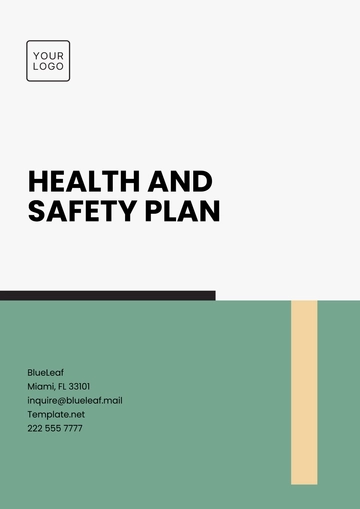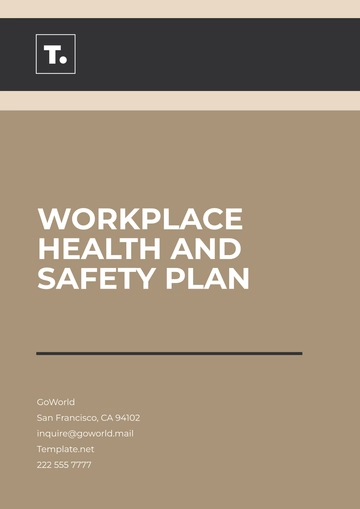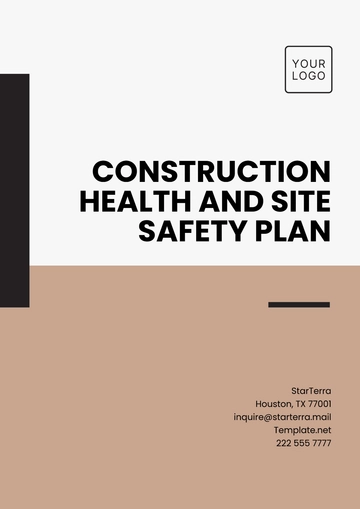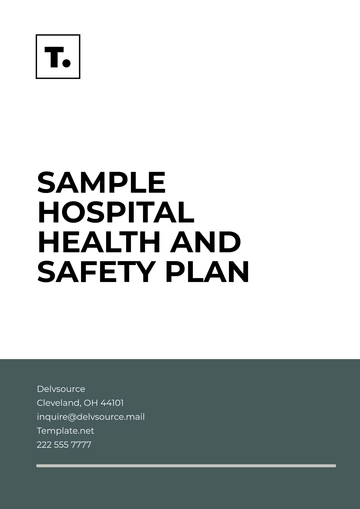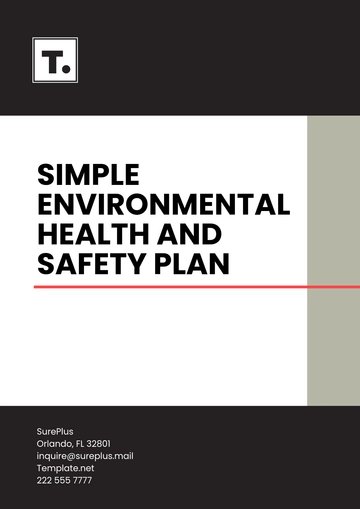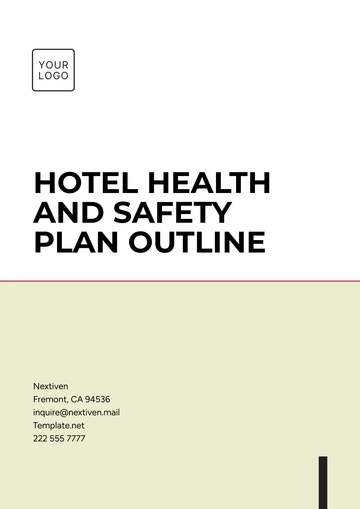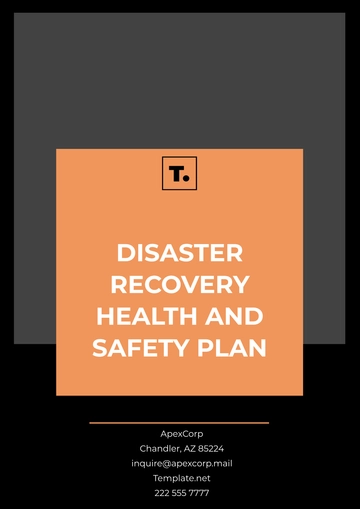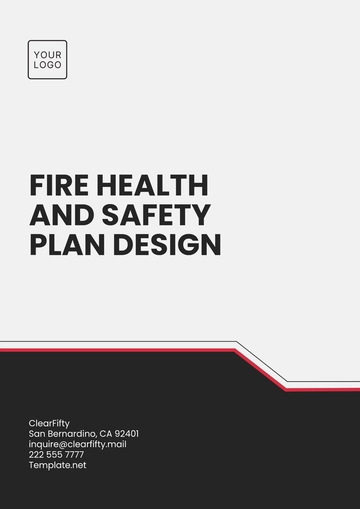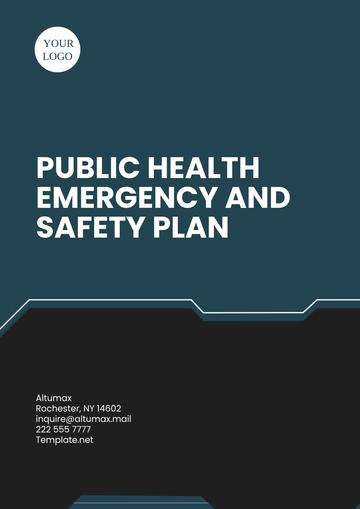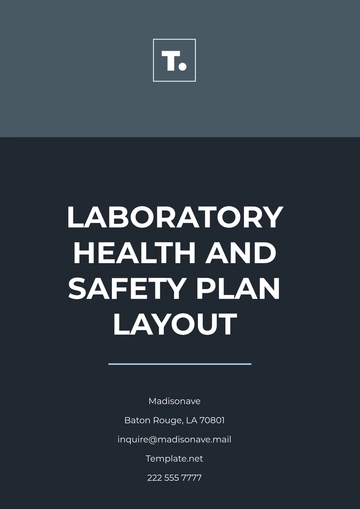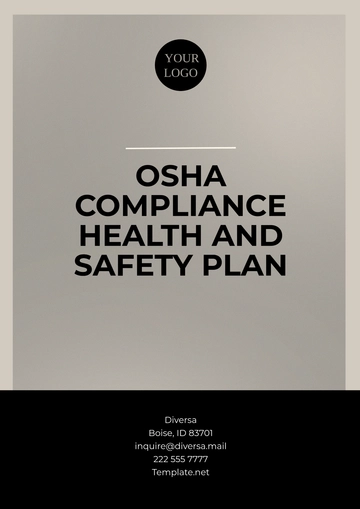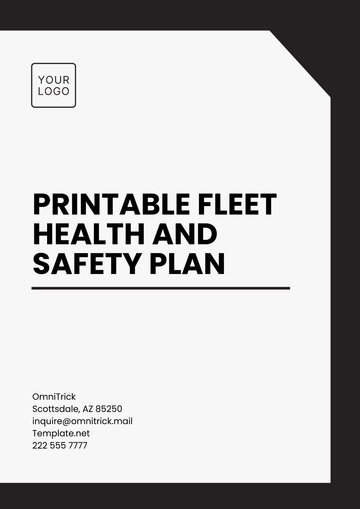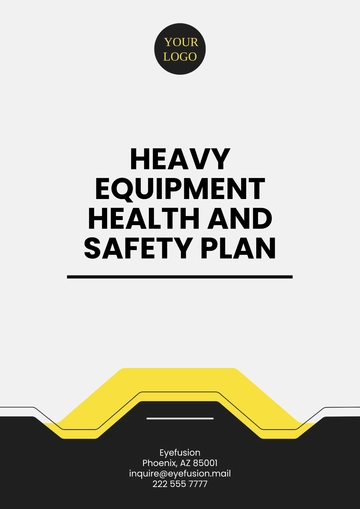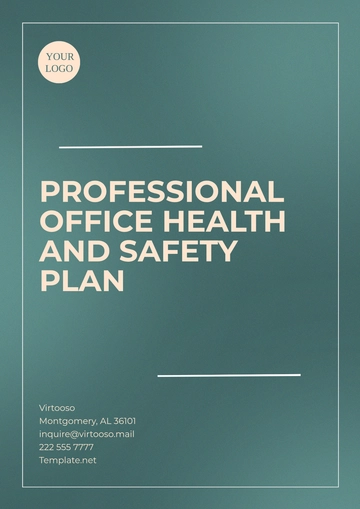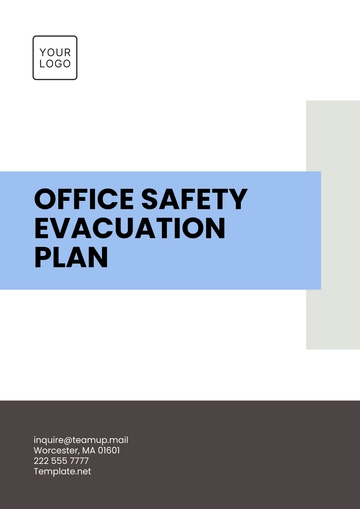Free Safety Plan For Therapist
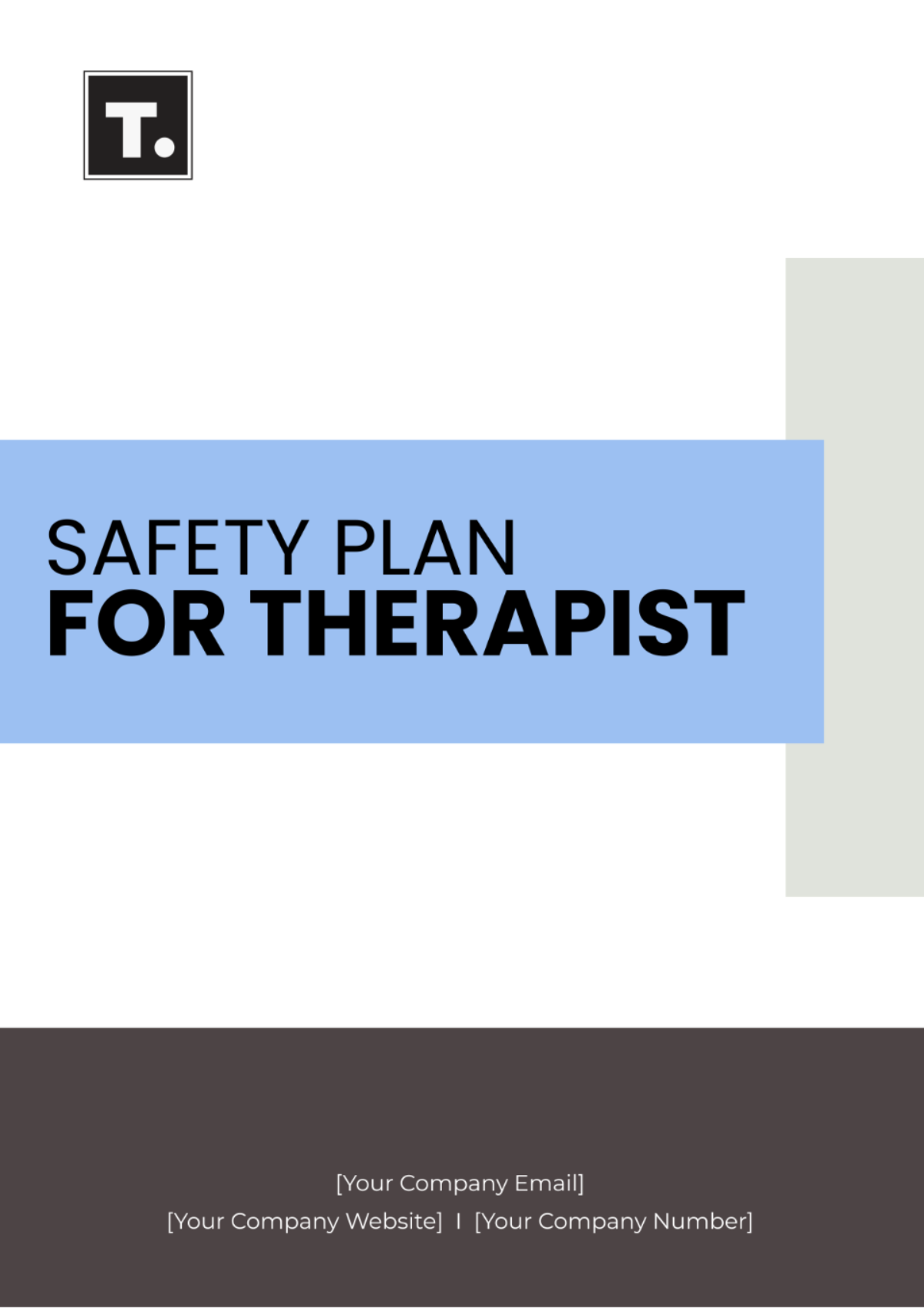
I. Introduction
A. Purpose
The purpose of this Safety Plan for Therapist is to establish protocols and strategies to ensure the safety and well-being of clients during therapy sessions and in emergencies. It aims to guide therapists in managing client crises and maintaining a secure therapeutic environment.
B. Scope
This plan applies to all therapists, counselors, and mental health professionals providing therapy services at [Your Company Name]. It encompasses strategies for client safety during therapy sessions and outlines procedures for handling emergencies.
II. Safety Measures
A. Client Screening
Therapists must conduct thorough client screenings to assess potential risks and determine the appropriate level of care for each individual.
B. Session Guidelines
Confidentiality: Ensure clients understand the limits of confidentiality and the circumstances under which information may be disclosed.
Boundaries: Maintain professional boundaries and adhere to ethical guidelines to protect both the therapist and the client.
Session Structure: Establish clear session structure and expectations to promote a safe and productive therapeutic environment.
C. Crisis Management
Risk Assessment: Conduct ongoing risk assessments to identify potential crises or safety concerns.
De-escalation Techniques: Train therapists in de-escalation techniques to manage crises effectively.
Emergency Protocol: Develop clear protocols for responding to emergencies, including contacting emergency services and implementing safety measures.
III. Emergency Contacts
In case of an emergency, the following contacts should be notified:
Contact Type | Name | Phone |
|---|---|---|
Emergency Services | [Emergency Services Contact] | [Emergency Services Number] |
Mental Health Crisis Line | [Crisis Line Contact] | [Crisis Line Number] |
IV. Client Safety Plan
A. Risk Assessment
Identifying Triggers: Work with clients to identify triggers and warning signs that may indicate an escalation of symptoms or crisis.
Safety Planning: Collaborate with clients to develop personalized safety plans outlining coping strategies and support networks.
B. Crisis Intervention
Establishing Boundaries: Set clear boundaries with clients regarding appropriate behavior during therapy sessions.
Implementing Safety Measures: Take immediate action to ensure the safety of the client and therapist in crises.
Contacting Emergency Services: If necessary, contact emergency services and follow established emergency protocols.
V. Documentation
A. Incident Reporting
Therapists must document all incidents, including client crises, safety concerns, and emergency responses. Detailed documentation ensures continuity of care and accountability.
B. Client Records
Maintain accurate and up-to-date client records, including safety plans, risk assessments, and progress notes, to track changes in client status and inform treatment decisions.
VI. Training and Education
A. Therapist Training
Provide comprehensive training for therapists on crisis intervention, de-escalation techniques, and emergency protocols. Regular training sessions ensure therapists are prepared to handle various situations effectively.
B. Client Education
Educate clients on safety planning, crisis management, and available support resources to empower them in managing their mental health and well-being.
VII. Review and Updates
Regularly review and update the Safety Plan for Therapist to reflect changes in best practices, regulatory requirements, and organizational policies. Solicit feedback from therapists and clients to ensure the plan remains relevant and effective.
VIII. Encouragement and Support
Promote a culture of safety and support within the therapeutic environment. Encourage open communication, self-care practices, and peer support to foster resilience among therapists and clients.
- 100% Customizable, free editor
- Access 1 Million+ Templates, photo’s & graphics
- Download or share as a template
- Click and replace photos, graphics, text, backgrounds
- Resize, crop, AI write & more
- Access advanced editor
Optimize client safety with a customizable Safety Plan Template For Therapists from Template.net. This editable template, available in our AI Tool, assists therapists in developing comprehensive safety strategies for their clients.
You may also like
- Finance Plan
- Construction Plan
- Sales Plan
- Development Plan
- Career Plan
- Budget Plan
- HR Plan
- Education Plan
- Transition Plan
- Work Plan
- Training Plan
- Communication Plan
- Operation Plan
- Health And Safety Plan
- Strategy Plan
- Professional Development Plan
- Advertising Plan
- Risk Management Plan
- Restaurant Plan
- School Plan
- Nursing Home Patient Care Plan
- Nursing Care Plan
- Plan Event
- Startup Plan
- Social Media Plan
- Staffing Plan
- Annual Plan
- Content Plan
- Payment Plan
- Implementation Plan
- Hotel Plan
- Workout Plan
- Accounting Plan
- Campaign Plan
- Essay Plan
- 30 60 90 Day Plan
- Research Plan
- Recruitment Plan
- 90 Day Plan
- Quarterly Plan
- Emergency Plan
- 5 Year Plan
- Gym Plan
- Personal Plan
- IT and Software Plan
- Treatment Plan
- Real Estate Plan
- Law Firm Plan
- Healthcare Plan
- Improvement Plan
- Media Plan
- 5 Year Business Plan
- Learning Plan
- Marketing Campaign Plan
- Travel Agency Plan
- Cleaning Services Plan
- Interior Design Plan
- Performance Plan
- PR Plan
- Birth Plan
- Life Plan
- SEO Plan
- Disaster Recovery Plan
- Continuity Plan
- Launch Plan
- Legal Plan
- Behavior Plan
- Performance Improvement Plan
- Salon Plan
- Security Plan
- Security Management Plan
- Employee Development Plan
- Quality Plan
- Service Improvement Plan
- Growth Plan
- Incident Response Plan
- Basketball Plan
- Emergency Action Plan
- Product Launch Plan
- Spa Plan
- Employee Training Plan
- Data Analysis Plan
- Employee Action Plan
- Territory Plan
- Audit Plan
- Classroom Plan
- Activity Plan
- Parenting Plan
- Care Plan
- Project Execution Plan
- Exercise Plan
- Internship Plan
- Software Development Plan
- Continuous Improvement Plan
- Leave Plan
- 90 Day Sales Plan
- Advertising Agency Plan
- Employee Transition Plan
- Smart Action Plan
- Workplace Safety Plan
- Behavior Change Plan
- Contingency Plan
- Continuity of Operations Plan
- Health Plan
- Quality Control Plan
- Self Plan
- Sports Development Plan
- Change Management Plan
- Ecommerce Plan
- Personal Financial Plan
- Process Improvement Plan
- 30-60-90 Day Sales Plan
- Crisis Management Plan
- Engagement Plan
- Execution Plan
- Pandemic Plan
- Quality Assurance Plan
- Service Continuity Plan
- Agile Project Plan
- Fundraising Plan
- Job Transition Plan
- Asset Maintenance Plan
- Maintenance Plan
- Software Test Plan
- Staff Training and Development Plan
- 3 Year Plan
- Brand Activation Plan
- Release Plan
- Resource Plan
- Risk Mitigation Plan
- Teacher Plan
- 30 60 90 Day Plan for New Manager
- Food Safety Plan
- Food Truck Plan
- Hiring Plan
- Quality Management Plan
- Wellness Plan
- Behavior Intervention Plan
- Bonus Plan
- Investment Plan
- Maternity Leave Plan
- Pandemic Response Plan
- Succession Planning
- Coaching Plan
- Configuration Management Plan
- Remote Work Plan
- Self Care Plan
- Teaching Plan
- 100-Day Plan
- HACCP Plan
- Student Plan
- Sustainability Plan
- 30 60 90 Day Plan for Interview
- Access Plan
- Site Specific Safety Plan
